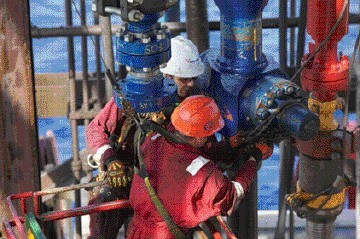
A massive 100trillion cu.ft of gas has been discovered in Mozambique and Tanzania to date, ranking the Rovuma Basin as one of the most prolific conventional gas plays in the world, according to analysts.
And there could be as much again within the territories of these two East African states.
But Wood MacKenzie warns of “significant technical and commercial challenges to be overcome” in order to bring the gas to market by the end of this decade.
These are said to include: addressing issues around infrastructure, government capacity, financing and reaching a positive outcome to unitisation negotiations in Mozambique.
The stream of recent discoveries and high profile M&A activity in Mozambique and Tanzania are attracting attention and that interest is justified, according to Martin Kelly, WoodMac’s head of Sub-Sahara upstream research.
Kelly said in a commentary: “100TCF of gas has been discovered to date and we estimate yet-to-find reserves could be as much as 80TCF in Mozambique and 15TCF in Tanzania.
“There is clearly plenty of gas to supply the likely commercialisation route of LNG (liquefied natural gas) – theoretically enough to support up to 16 LNG trains.
“The Rovuma basin is the most prolific in the region, and one of the hottest conventional gas plays in the world. Globally in 2011, it yielded the third most hydrocarbons, and we expect it to top the list in 2012 if the first half of the year is anything to go by.”
In neighbouring Tanzania, the targets are the northern extension of the Rovuma Basin and the Mafia Basin.
Kelly said: “Tanzania has enjoyed considerable exploration success as well, but has not discovered the same scale of reserves.
“The average discovery size is much smaller at around 2TCF, compared to Mozambique which is over 7TCF. Discoveries in Tanzania are also more spread out, so developing them will be more expensive than those in Mozambique because additional infrastructure will be required.”
He argues that one of the most immediate challenges for Mozambique, is the unitisation discussions which have apparently now started.
“Of the 85TCF of gas discovered to date in Mozambique, around half of it is thought to be one enormous field which is in communication across the block. Under Mozambican law, a unitisation agreement between the operating parties will be required.”
Although there is a risk that unitisation discussions could delay Final Investment Decision (FID) – the crucial last step before commercial development – and therefore LNG production, there are other discoveries which are wholly contained in Area 1 and Area 4 and therefore gas could come from these first.
WoodMac said of the LNG challenges that there are many, including remoteness and the lack of a skilled workforce, also minimal infrastructure including ports capable of handling exports of gas product.
“On the commercial side, there is the question of government capacity – whether there is sufficient impetus and capability within the governments and national oil companies to advance the huge legislative, bureaucratic, customs and financial challenges that such a development would bring,” added WoodMac LNG analyst Giles Farrer.
“The major outstanding milestone for Mozambique is the conclusion of a commercial framework agreement, which is in the process of being negotiated,” he said.
“It will determine how the LNG facility or facilities will be structured for the purpose of taxation and whether the Joint Ventures (JVs) will co-operate in the construction of a single, mega LNG facility, or pursue individual developments.
“One crucial advantage that the Tanzanian projects enjoy is that they have already negotiated commercial terms, prior to the announcement of their projects.”
Farrer also raised the issue of money, estimating that a two-train greenfield development in the region is going to cost at least $25billion.
“For some of the players involved financing their share of this sort of development cost will certainly prove challenging and could delay development. The risk is that delays could lengthen development schedules and add to costs.”